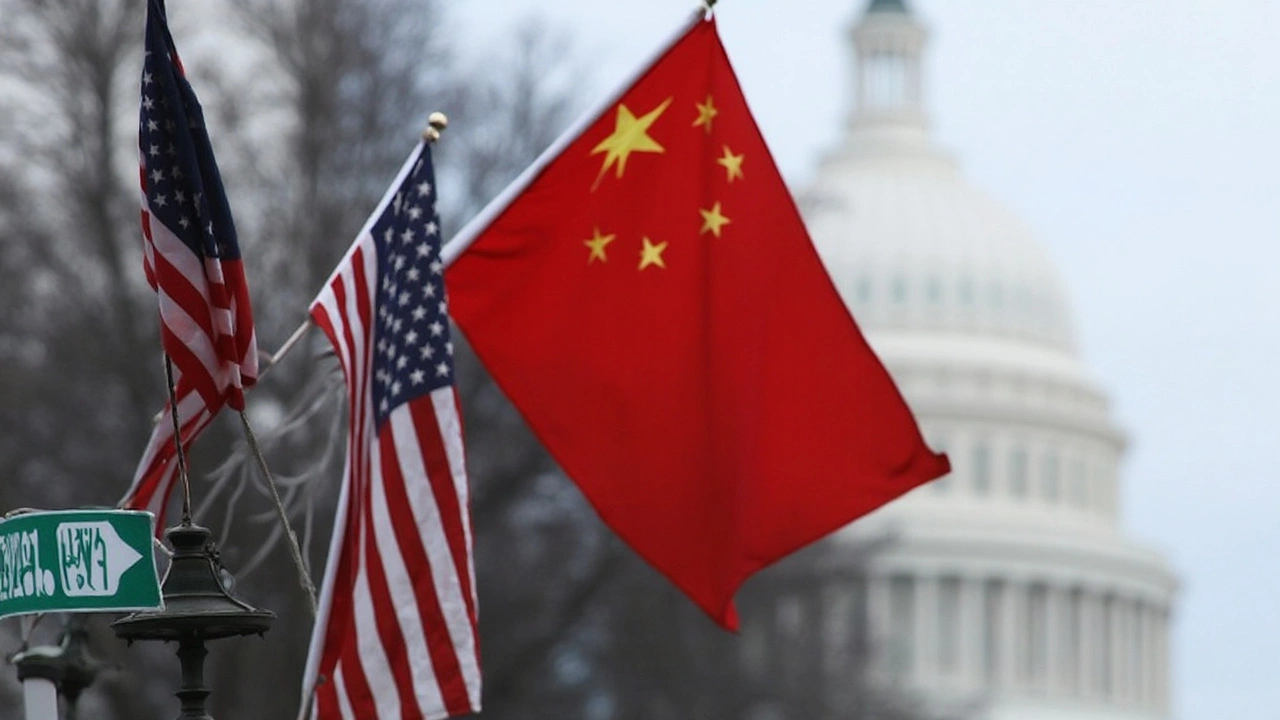On April 9, 2025, the U.S. stock market experienced a remarkable upswing following a significant announcement by President Donald Trump. The President declared a temporary halt, for 90 days, on 'reciprocal tariffs' imposed on most trading partners. This strategic pause excludes China, which now faces increased tariffs on its exports to the U.S., jumping to a steep 125%.
This announcement had an electrifying effect on Wall Street, as major stock indices saw historic gains. The S&P 500 soared by 9.5%, closing at an impressive 5,457—a record single-day increase not seen since the financial crisis of 2008. Similarly, the Dow Jones Industrial Average leapt by 7.9% to 40,608, while the Nasdaq Composite spiked 12.2% to reach 17,125. Such unprecedented gains showcase investor optimism, at least in the short term, resulting from the temporary easing of trade pressures.
Market Reactions and Sectoral Performance
The decision to pause tariffs, initially set between 10% to 84% on imports from over 75 countries, provided a glimmer of hope to businesses and investors weary from trade tensions. However, relations with China remain strained as Beijing responded swiftly by boosting tariffs on American goods to 84%, a significant increase from 34%. This move is a direct rebuttal to Trump's earlier imposition of tariffs at 104% on Chinese imports, marking an intensifying trade standoff between the two giant economies.
In this environment, tech giants emerged as big winners. Companies like Nvidia saw their stocks surge by 18.7%, alongside Apple, which experienced a 15% increase. Airlines also enjoyed a marked recovery; stocks for major players like Delta and American Airlines jumped by 23.4% and 22.6%, respectively, despite ongoing travel demand uncertainties. Delta even withdrew its financial forecasts for 2025, highlighting the unpredictable market conditions.
Walmart, while maintaining its sales outlook, acknowledged the overarching economic uncertainties related to current tariff policies. Treasury yields experienced volatility, initially reaching 4.50% before easing back to 4.34%. This fluctuation indicates both market turbulence and a cautious investor sentiment towards long-term economic forecasts.

Global Implications and Economic Predictions
Beyond the U.S., global markets had varied responses leading up to and following Trump's announcement. European and Asian markets initially faltered, experiencing declines, possibly driven by fear of prolonged trade disruptions. Conversely, Chinese markets managed a slight gain as responses unfolded.
Analysts are sounding alarms that the ongoing trade skirmish could precipitate a more substantial economic downturn. Bill Adams from Comerica Bank cautioned about the extended effects of 125% tariffs on Chinese goods, warning of the 'huge problems' they could pose for U.S. businesses reliant on Chinese products.
While the temporary tariff freeze seems to have injected some reprieve into the market, the looming threat of a continued trade war with China keeps businesses and investors on edge. Should these conflicts intensify, the ripple effects might eventually lead to broader economic consequences, just as the world economy is trying to find its footing.





